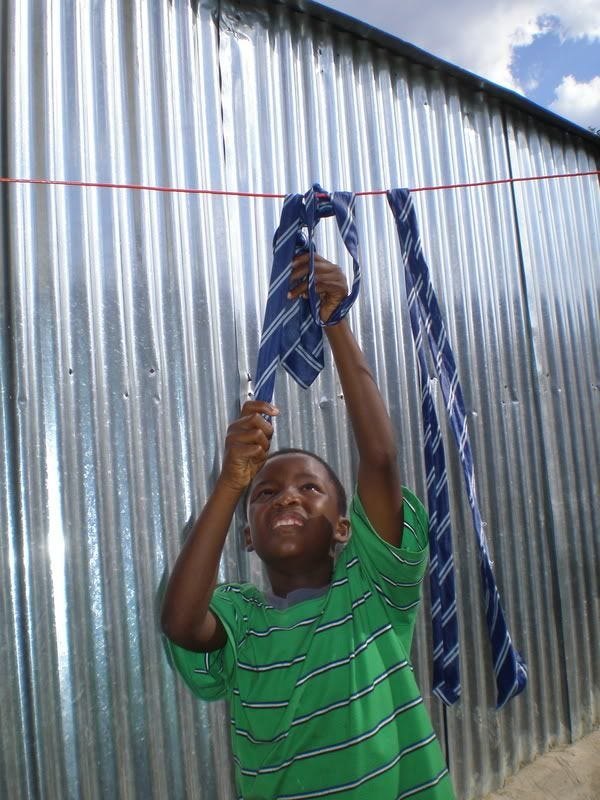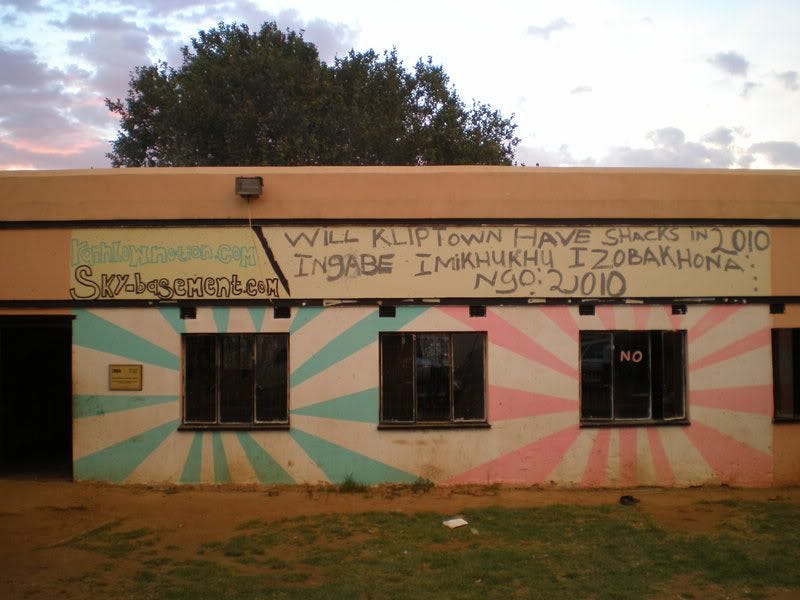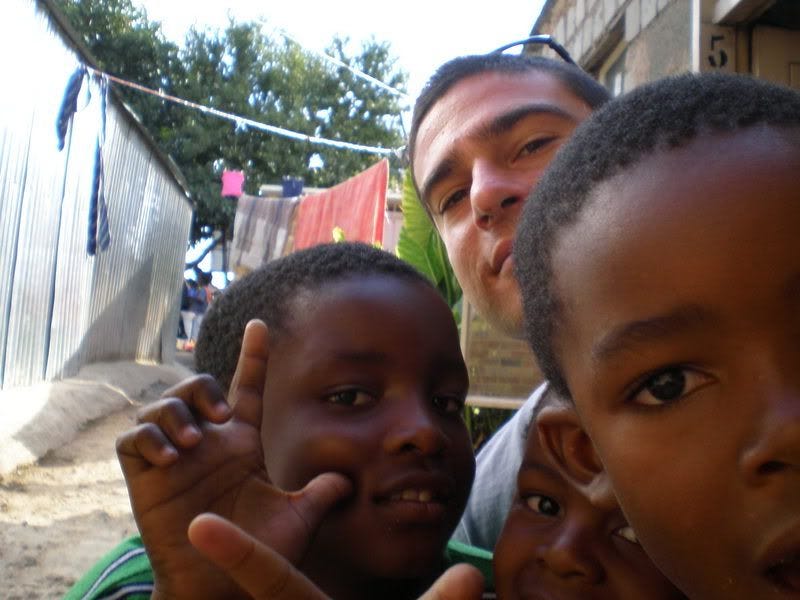My Trip to South Africa



I am writing from the tiny village of Bethel (population 200) in the tiny country of Lesotho (population 2,000,000). I have been filming a group of MIT students who are trying to develop a system that uses solar thermal energy to generate electricity using nothing more than old car parts. Unfortunately, the one flaw in any solar energy system has reared its ugly head, bad weather. I am waiting to see their machine in action, but storm clouds have now lingered for the second day in a row, so I am confined to be indoors with plenty of time on my hands.
This is a refreshing change from the frantic pace with which I have been storming through Southern Africa. My journey started in Johannesburg, where I visited the Apartheid museum. It’s a fascinating museum, which attempts to personalize the absurdity of racial separation by grouping visitors as either whites or non-whites upon entering. I received a non-white ID tag, which meant that I had to enter door number two. The museum left me completely repulsed and sharpened my eye to the post-Apartheid remnants that linger today in South Africa.
I then drove myself to Soweto, which I had imagined to be quite a scary place. Soweto is short for South West Townships, and was the main shantytown outside of Johannesburg that supplied the cheap black labor required to toil in the city’s gold mines, estates, and industries. I had only head stories of violent crime about Soweto and was admittedly nervous driving in there by myself. With my map in one hand and my other hand alternating between the wheel and the stick shift, I must have been driving pretty erratically when I got pulled over by the Soweto police. They came to my car window and asked me if I was drunk. Considering the fact that it was 11 AM on a Wednesday, I must have been driving worse that I thought. I said that I was not drunk and that I was simply lost and looking for Nelson Mandela’s old house, which has become a tourist attraction. They laughed and asked me where I was from. I said that I was American and they asked why I wasn’t on a tour bus. I told them that tour buses are for old people, and they laughed harder this time and I now had two important allies in Soweto. They became my police escorts for the day, showing me the way to Nelson’s old house, and then to my final destination, Kliptown.
I was surprised by the size of Soweto. It has millions of residents and fills up a large geographical area. I was particularly astonished by the disparate levels of wealth inside the township. In certain neighborhoods, you can see decadent two story houses, BMW’s ripping down paved roads, black men teeing off at the Soweto Country Club, and power lines providing electricity to thousands. In other areas, you can see corrugated iron roofs, sewage-filled streets, paraffin lighting, and the shameful frowns of poverty. Kliptown falls into the latter category.
It is as destitute as it gets in South Africa, with all the familiar symptoms of poverty; high levels of unemployment, HIV/AIDS, crime, prostitution, and illiteracy. I went there to film a guy named Thulani, who runs an after school program designed to teach Kliptown’s teenagers positive values. He was quite the character. The kids poured into his classroom and you could see why. Thulani’s enthusiasm and passion was contagious. He asked the kids what the topic of the day should be; one girl answered teen pregnancy. So that is what they spoke about for an hour. Thulani would ask provocative questions such as, “If a man offered you 200 rand for sex, would you accept?” Some girls said yes. “If a man said he would give you an extra 100 rand to not use a condom, would you accept?” Some of the same girls said yes. I was taken a back at how cheaply these girls would give their lives away. The girls made it clear that they knew the consequences of AIDS, but that they would rather die of AIDS in 20 years than of hunger today. Thulani couldn’t argue with that logic, but he did emphasize that they should strive for abstinence and protected sex.
Then Thulani turned the tables on me. It was time for the kids to ask the American filmmaker questions. About 15 inquisitive kids raised their hands with some very interesting questions for me. “Is there racism in America?” “How do you feel about the war in Iraq?” “Do you have a girlfriend?” “Do you have a car?” “What do you think about South Africa?” I answered most of the questions honestly and gracefully, but after an hour in the hot seat, I was glad to be whisked away to a gumboot dance performance by the younger kids.
Then I drove out of Soweto and back to the upper middle class neighborhood where I am staying. The brave woman who has so generously put me up for a few weeks is the only house on the block without 10 foot walls and electric fences. Due to the high levels of violent crime that has plagued Johannesburg, the more affluent, typically white communities lives in a state of fear. They have no faith in the police and have resorted to hiring their own armed security forces to protect themselves. These seemingly tranquil neighborhoods even have mobile tactical units that drive around in armored vehicles and loaded AK-47s in case some mayhem should erupt. More and more civilians are taking self-defense courses and carrying around pistols. Some people are afraid to go out at night. Johannesburg is a tense place.

Kliptown After School Program

Me and Thulani

African children are so photogenic and they know it. They love being in pictures. Everywhere you walk with a camera, the kids shout, "Shoot me, Shoot me!"

